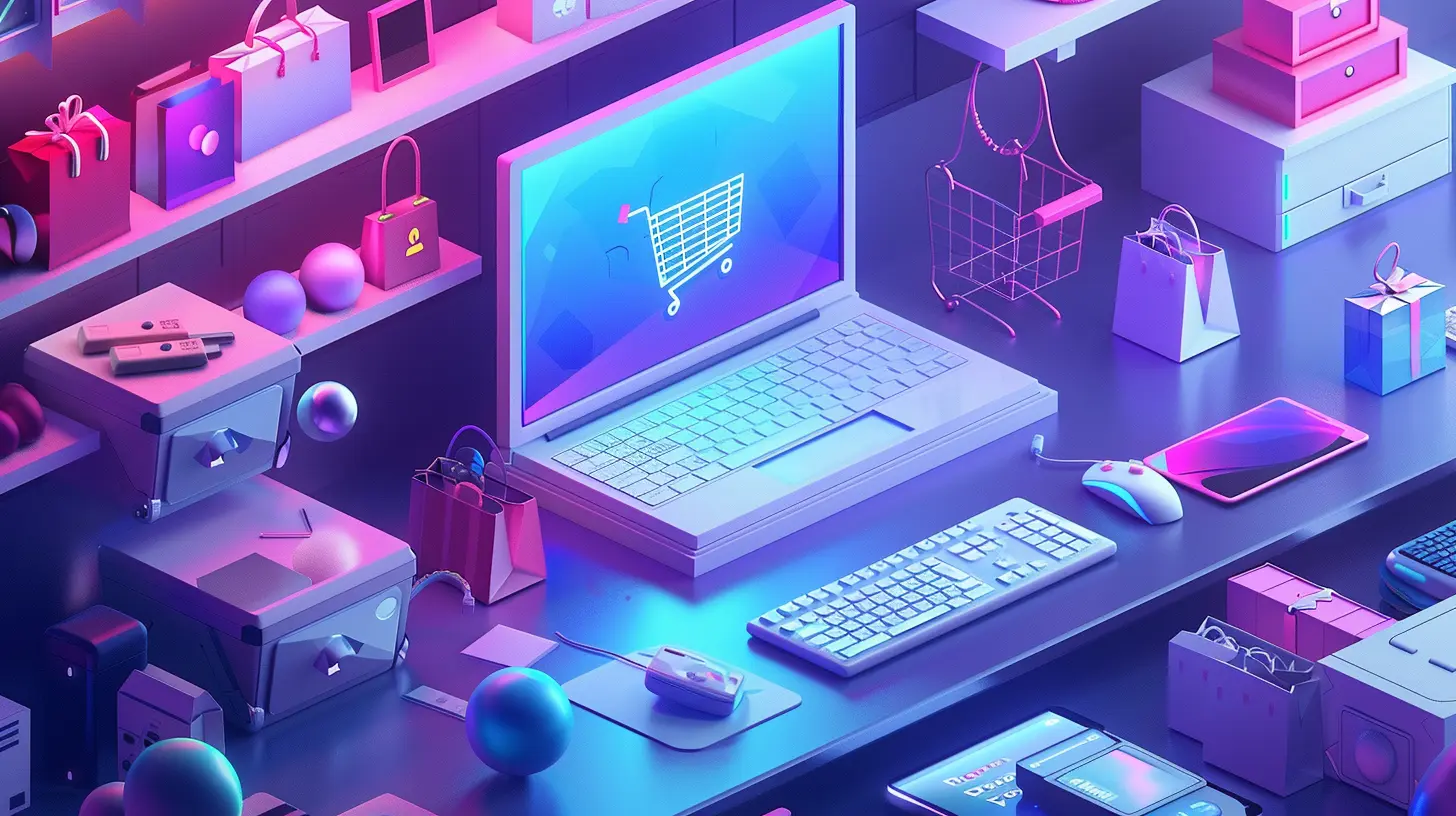Best Practices for Safe Online Shopping
10 May 2025
Online shopping has revolutionized the way we buy things, hasn't it? With a few taps on our screens, we can have virtually anything delivered right to our doorstep. But while this convenience is amazing, it also comes with a few risks. Scammers, cybercriminals, and phishing attempts have become increasingly common in the digital world. So, how can you protect yourself and still enjoy the wonders of online shopping?
Let’s dive into some of the best practices for safe online shopping. Whether you’re a seasoned online shopper or a newbie, these tried-and-true tips will help you avoid those unpleasant surprises.

1. Shop from Reputable Websites
This one’s a no-brainer, right? But it’s surprising how many people get caught up in the excitement of a deal and forget to check the legitimacy of the website.How to Spot a Reputable Website
- Look for HTTPS: Always ensure the URL starts with "https" (the "s" stands for secure). It means the site is using encryption to protect your data.- Check for a Padlock: A small padlock icon in the address bar indicates that the website is secure.
- Do a Quick Search: If you’re unsure about a site, Google it. Look for reviews or complaints. If a website has scammed others, there’s a good chance someone has written about it online.
Be Wary of "Too Good to Be True" Deals
We’ve all seen those ads promising 90% off on luxury items… sounds amazing, right? But here’s the thing: if it seems too good to be true, it probably is. Sellers on shady websites use unbelievable deals to lure unsuspecting buyers. Stick with retailers you know, or do thorough research before buying from a new one.
2. Use Strong, Unique Passwords
We’ve all been guilty of using "password123" at some point, haven’t we? But in the world of online shopping, a weak password is like leaving your front door wide open. Make sure your passwords are strong and unique for each shopping site.Tips for Creating Strong Passwords
- Use a mix: Combine uppercase and lowercase letters, numbers, and special characters.- Avoid personal info: Don’t use easily guessable info like your name, birthdate, or pet’s name.
- Consider a password manager: These tools can generate and store complex passwords for you, so you don’t have to remember them all.

3. Enable Two-Factor Authentication (2FA)
Two-factor authentication is like adding an extra deadbolt to your digital door. Even if someone manages to get your password, they still need a second piece of information—usually a code sent to your phone or email—to access your account.Why Use 2FA?
- Added layer of security: It’s an extra step, but it can block many hacking attempts.- Peace of mind: Knowing that even if your password is compromised, your account is still safe.
Most reputable online retailers offer 2FA as an option, so if you haven’t turned it on yet, now’s the time!

4. Avoid Public Wi-Fi for Transactions
I get it—sometimes we’re in a coffee shop or at an airport, and we need to make a quick purchase. But here’s the deal: public Wi-Fi is not secure. Hackers can easily intercept the data you’re sending, which could include your credit card number or login credentials.What to Do Instead
- Use mobile data: It’s much safer to use your phone’s data plan than public Wi-Fi.- Consider a VPN: If you absolutely must shop on public Wi-Fi, use a Virtual Private Network (VPN). It encrypts your data and makes it harder for hackers to access.
5. Check Your Bank Statements Regularly
Let’s be honest: how often do you really check your bank statements? Once a month? Every few months? Well, when it comes to online shopping, it’s a good idea to keep a closer eye on your accounts.Why It’s Important
- Spot fraudulent charges early: If a scammer gets hold of your card info, you can catch unauthorized transactions quickly and report them to your bank.- Prevent bigger losses: The sooner you catch fraudulent activity, the less damage the scammer can do.
Most banks and credit card companies offer real-time alerts for transactions, so consider enabling these features. That way, you’ll know right away if something fishy is going on.
6. Be Cautious with Email Links
Phishing emails are getting more sophisticated by the day. Scammers often send emails that look exactly like they’re from your favorite online store, urging you to click a link to "confirm your order" or "reset your password."How to Stay Safe
- Don’t click on links in unsolicited emails: Instead of clicking, go directly to the website by typing the URL into your browser.- Check the sender’s email address: Often, phishing emails come from addresses that are similar to, but not exactly like, the real company’s email.
- Look for grammatical errors: Many phishing emails contain awkward phrasing or misspellings. Treat these as red flags.
7. Use Credit Cards Over Debit Cards
When shopping online, it’s generally better to use a credit card rather than a debit card. Why? Credit cards offer better protection against fraud.Benefits of Using a Credit Card
- Dispute charges: If you’re charged for something you didn’t buy, credit card companies usually allow you to dispute the charge and get your money back.- Less exposure to your funds: A debit card is linked directly to your bank account, so if a scammer gets hold of it, they could drain your funds. With a credit card, you’re using borrowed money, which adds a layer of protection.
8. Beware of Fake Apps
In the world of mobile shopping, fake apps are another threat. Scammers create apps that look like legitimate shopping platforms to steal your personal information.How to Avoid Fake Apps
- Download from official app stores: Stick to the Google Play Store or Apple’s App Store. Avoid downloading apps from third-party websites.- Check reviews and ratings: Before downloading any shopping app, look at the ratings and read through some reviews. If something seems off, move on.
- Examine the developer: Legitimate apps are usually developed by companies you’ve heard of. If the developer name looks strange, think twice before downloading.
9. Keep Your Devices Updated
I know, those software update notifications can be annoying. But here’s the thing: they’re crucial for your security. Developers are constantly patching security vulnerabilities, so keeping your devices updated is a must.Why You Should Update Regularly
- Fix vulnerabilities: Hackers often exploit weaknesses in outdated software. Updates help close these security gaps.- Improve performance: Updates can also make your device run more smoothly, which is always a plus.
10. Use Secure Payment Methods
In addition to using credit cards, there are other secure payment methods that add an extra layer of protection when shopping online.Secure Payment Options
- PayPal: One of the most popular options, PayPal acts as a middleman between your bank and the seller, so the seller never sees your financial details.- Apple Pay/Google Pay: These digital wallets use encryption and tokenization to keep your data safe.
- Virtual credit cards: Some banks offer virtual credit cards, which generate a temporary card number for online purchases. This number can only be used once, so even if it’s stolen, the thief can’t use it again.
11. Monitor Your Online Shopping Accounts
If you shop online frequently, you probably have accounts with multiple retailers. It’s a good idea to regularly log in to these accounts and check for any unusual activity.What to Look For
- Unrecognized purchases: If you see orders you didn’t make, contact the retailer immediately.- Shipping addresses: Ensure that your shipping address hasn’t been changed.
- Saved payment methods: Make sure no new payment methods have been added without your knowledge.
12. Trust Your Instincts
Last but not least, trust your gut. If something doesn’t feel right, step back and rethink your purchase. Whether it’s a suspicious website, a weird email, or an app that just doesn’t look legit, it’s better to be safe than sorry.Final Thoughts
Shopping online is one of the greatest conveniences of modern life, but it’s essential to stay vigilant. By following these best practices, you can enjoy the ease of online shopping without putting your personal and financial information at risk. Remember, a little caution goes a long way in keeping your online shopping experience safe and secure.Happy (and safe) shopping!
all images in this post were generated using AI tools
Category:
Online SecurityAuthor:

Vincent Hubbard
Discussion
rate this article
5 comments
Adeline Kline
“Shopping online is like eating dessert before dinner—exciting but risky! Just remember to check the site’s safety labels before indulging in those virtual treats!” 🍰💻
May 22, 2025 at 4:56 AM

Vincent Hubbard
Great analogy! Always prioritize safety while indulging in online shopping. Happy and safe shopping! 🍽️🛒
Shiloh Chavez
Prioritize security; trust your instincts to ensure a safe experience.
May 15, 2025 at 7:28 PM

Vincent Hubbard
Absolutely! Trusting your instincts is key to protecting yourself while shopping online. Prioritizing security ensures a safer experience overall.
Natalie McClintock
Always use secure websites, strong passwords, and monitor bank statements for unauthorized transactions.
May 14, 2025 at 8:12 PM

Vincent Hubbard
Absolutely! Prioritizing secure websites, strong passwords, and regular bank statement checks is essential for safe online shopping. Thank you for the reminder!
Faelith Phelps
Great article! Emphasizing safety in online shopping is crucial in today's digital world. By following these best practices, we can protect our personal information and enjoy a worry-free experience!
May 13, 2025 at 7:11 PM

Vincent Hubbard
Thank you for your feedback! I'm glad you found the emphasis on safety important—it's essential for a secure online shopping experience.
Madalyn Adkins
Great insights! I'm intrigued by how evolving technologies can further enhance online shopping safety. What emerging tools or trends do you think will shape our shopping experiences in the future?
May 10, 2025 at 5:01 AM

Vincent Hubbard
Thank you! Emerging technologies like AI-driven fraud detection, blockchain for secure transactions, and biometric authentication are set to significantly enhance online shopping safety in the future.




